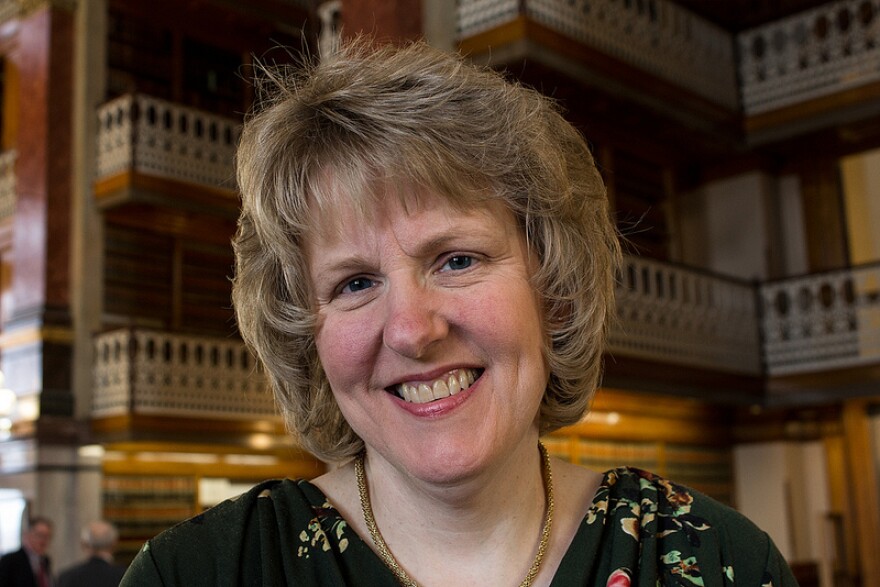At Meredith Middle School on Des Moines’ northwest side there are more than 30 ways students say hello. The number of languages can change week to week. This school year the Des Moines school district will receive more than 6 million dollars from federal and state funds for ELL services, and will also spend more than a million dollars of its own money. Next year the district plans to have more than 6,000 ELL students.
“The need is really humongous. When I use humongous I mean really big in terms of diversity among the English Language Learner,” said ELL Coordinator Vihn Nguyen at Des Moines Public Schools. “(There’s) Diversities in the language group among themselves and also diverse in terms of language proficiency and literacy.”

Iowa schools have seen an increase in students who require English Language Learning services: That is immigrants and refugees who do not speak English and are unfamiliar with American culture. School districts are picking up more of the tab to provide these services as the population grows and school districts are struggling to keep up with a rapidly diversifying Iowa.
“The real story today and what keeps us busy is this micro diversity or what we call micro plurality,” said Mark Grey, the Director of the Iowa Center for Immigrant Leadership and a professor of Anthropology at the University of Northern Iowa. “We have many smaller ethnically and linguistically diverse populations.”
Grey’s been studying immigration for decades. He said when a critical mass of students speak one language – like Spanish – a school district could train interpreters and find the resources.
“You could send the notes home to kids in Spanish, often those things were read and those messages got through. What do you do with Dinka? What do you do with Nuer?” Grey said. “What are you doing with rarer languages we see from central pacific? What are we doing with some of the Mya dialects we’re seeing parts of the state.”
Grey said a little bump in funding for school ELL programs has done wonders for districts.
Two meatpacking plants have attracted immigrants to live in the rural western Iowa school district Denison. Mike Pardun is the superintendent for Denison Community Schools. He said up to 6 out of every 10 of his students has some second language challenge and many federal and state laws make things even more complicated for ELL students.
“If you look at No Child Left Behind and everybody be proficient at a certain stage or the state law where by the end of 3rd grade everyone will be proficient in reading, Pardun said. “Certainly we’re supportive of those things; they make a lot of sense. You just can’t legislate someone all of sudden proficient in multiple languages.”
Pardun said more state funding would beef up his district’s ability to provide for students that need these services.
“Our property tax owners have to work much harder than a property rich area yet our students may require very similar services,” Pardun said. “The dollar per thousand that I might have to tax my folks might only take 15 to 20 cents in another location. Is that fair? Certainly I don’t think that’s fair. Kids should be… if we want equitable services there should be an equitable cost on how we fund those services.”
Pardun served on a task force put together by the Iowa Department of Education that tried to find some best practices and make recommendations to the Iowa legislature. The report includes a gradual increase in the amount of additional funding from the state and stretches out the number of years students would be eligible to receive ELL services: from 5 years to 7 years.

In the Democratic-controlled Senate, Senator Janet Petersen, a Des Moines Democrat, introduced a bill with these task force recommendations. Under the legislation, over two years… each ELL student would go from receiving just more than 1,300 additional dollars to just more than 1,900 dollars.
“What’s happening now is if a student is not becoming proficient in English in the amount of time the state provides the additional funding school districts have to make up the difference which is falling on the backs of local tax payers,” Petersen said.
The senate bill would also establish an advisory group of educators within the Department of Education. It would make it so if a student left Iowa and returned, their eligibility for ELL services would pick back up when they returned to the state.
That point is the same in a bill in the Republican-controlled Iowa House. Representative Mary Ann Hanusa, a Council Bluffs Republican, said the bill creates a pilot program to work with a handful of districts with a high percentage of English Language Learners.

“We want students to become as proficient as possible in the shortest amount of time possible for their benefit,” Hanusa said. “As well as society’s (benefit) and help them becomes as successful as possible we really want to start the process of finding out what are the best practices.”
Meanwhile, Mark Grey with the Iowa Center for Immigrant Leadership says there is no single easy fix. He applauds both the efforts in the Senate and House but at the same cautions time is running out.
“If there was a single answer, trust me; we would have bottled it a long time ago,” Grey said.
Grey said Iowa is not keeping up with its diversification of languages. And he says continuing to fall behind will create a whole new set of challenges.
This year, the Iowa Department of Education will spend more than 20 and a half million dollars on ELL services.


